#Chaos AD
Text

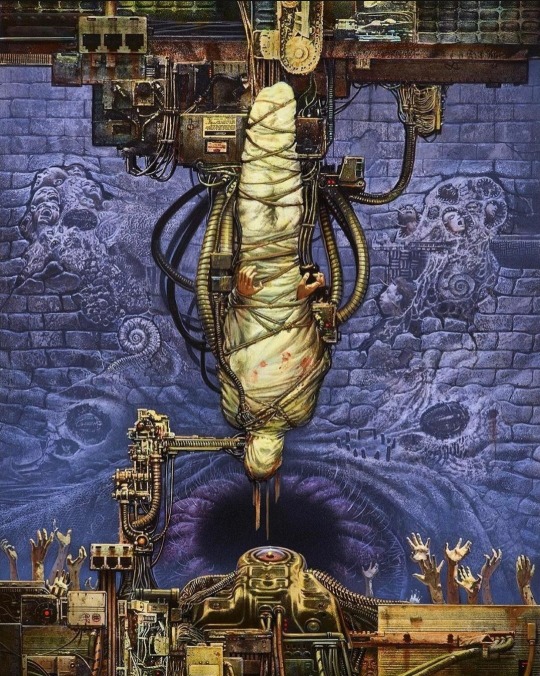



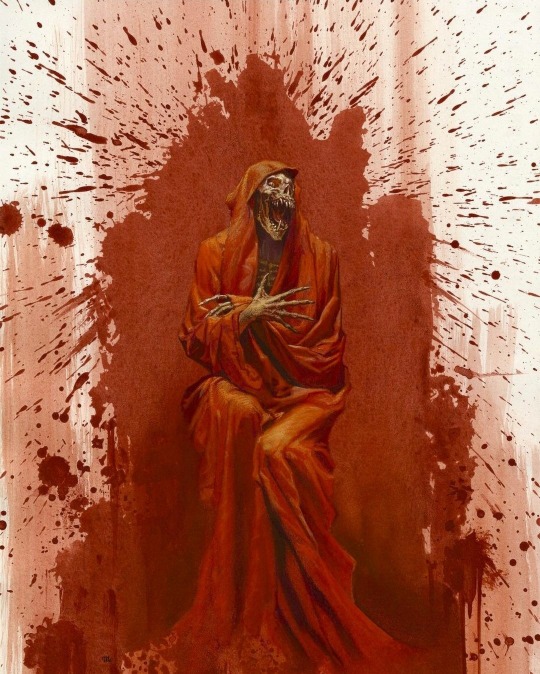
𝔐𝔦𝔠𝔥𝔞𝔢𝔩 𝔚𝔥𝔢𝔩𝔞𝔫
#Michael Whelan#art#artwork#illustrations#illustration#sepultura#chaos ad#grim reaper#reaper#Monster in the Closet#horror aesthetic#horror#terror#halloween#halloween aesthetic#cover art#cacophony
876 notes
·
View notes
Text
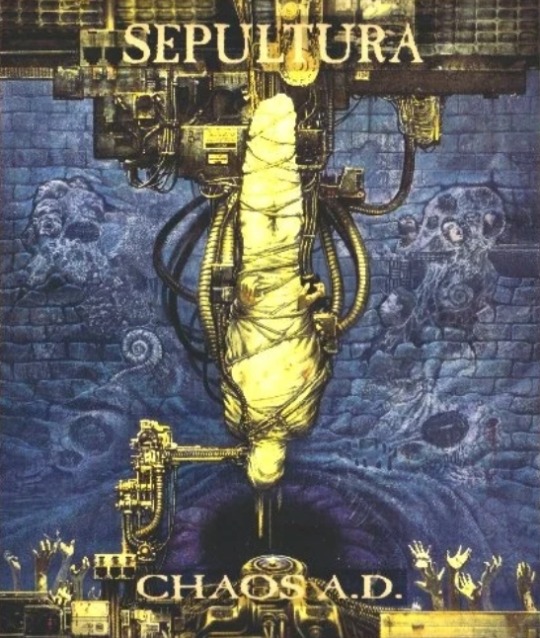
TERRITORY - SEPULTURA
#sepultura#territory#chaos ad#max cavalera#90s#90s rock#90s music#90s heavy metal#90s trash metal#trash metal
17 notes
·
View notes
Photo
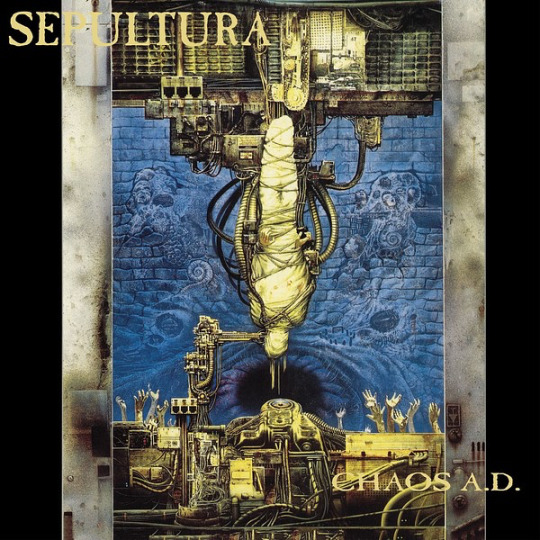
nowplaying Refuse / Resist by Sepultura out of Chaos A.D. (Expanded Edition)
2 notes
·
View notes
Text

Max Cavelera- Sepultura
0 notes
Text
1 note
·
View note
Text

0 notes
Text

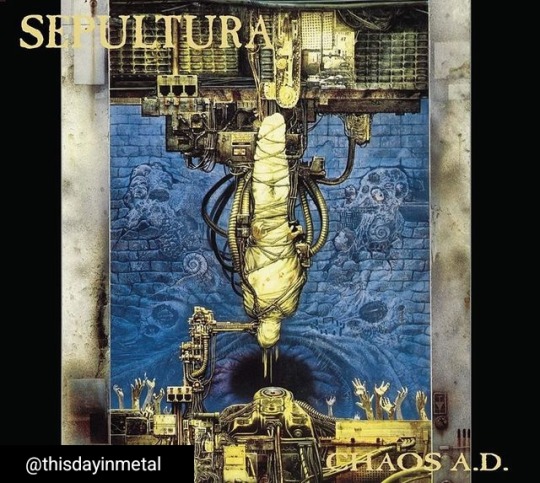
Reposted from @thisdayinmetal #ThisDayInMetal #OnThisDay #HeavyMetal
Sept 2nd 1993 #Sepultura released the GREAT album "CHAOS A.D."
What’s your favourite song off the album?
0 notes
Text


Chaos Dad got to visit and sent us a message ❤️
#ofmd#our flag means death#stede bonnet#renew as a crew#save ofmd#save our flag means death#chaos dad#daddy jenkins#proud pirate daddy#david jenkins#hoist the ads#finish our stories
951 notes
·
View notes
Text

sweet baby… this was so so so fun to draw. shoutout to the tens of vintage shaving cream ads i combed through to reference this
prints
#bordel is french slang for chaos#giggling and kicking my legs#fruitgravy#digital art#procreate#aesthetic#illustration#character art#character design#oc#original character#moonie’s ocs#original characters#orignal oc#original comic#vintage art#vintage aesthetic#vintage#vintage ads#vintage advertising#magazine#mafia oc#oc artist#art#artist support#concept art#artwork
575 notes
·
View notes
Text

have speed painting of a galaxy noot
(This took like ten mins💀)
Nightmare belongs to jokublog

Edit: background?? Don’t know if I like it or not so take both :^
#utmv#Nightmare sans#watercolor chaos#ut au#dreamtale nightmare#dreamtale#undertale#bad sanses#traditional art#sans aus#If you’re ever stressed#speed draw the most chaotic thing intentionally mindlessly#Doesn’t have to look good if it makes you feel better :)#(Yeah I added a background after posting pft)#My art
554 notes
·
View notes
Text
Cold Iron in folklore, fiction, and RPGs
'Gold is for the mistress—silver for the maid!
Copper for the craftsman cunning at his trade.'
'Good!' said the Baron, sitting in his hall,
'But Iron—Cold Iron—is master of them all!'
— Rudyard Kipling, “Cold Iron”
Folklore

Drudenmesser, or "witch-knife", an apotropaic folding knife from Germany
The notion that iron (or steel) can ward against evil spirits, witches, fairies, etc is very widespread in folklore. You hang a horseshoe over your threshold to deny entry to evil spirits, you carry an iron tool with you to make sure devils won't assault you, you place a small knife under the baby's crib to ward it from witches, and so on. Iron is apotropaic in many many cultures.
In English, we often come across passages that refer to apotropaic cold iron (or cold steel). "All uncouth, unknown Wights are terrifyed by nothing earthly so much as by cold Iron", says Robert Kirk in 1691, which I believe is the earliest example. "Evil spirits cannot bear the touch of cold steel. Iron, or preferably steel, in any form is a protection", says John Gregorson Campbell in 1901.
Words
So what is cold iron? In this context, it’s just iron. The “cold” part is poetic, especially – but not only – if we’re talking about either blades (or swords, weapons, the force of arms) or manacles and the like. It just sounds more ominous. There are “cold yron chaines” in The Fairie Queene (1596), and a 1638 book of travels tells us that a Georgian general (in the Caucasus) vowed “to make the Turk to eat cold iron”.
Green’s Dictionary of Slang defines “cold iron” as a sword, and dates the term to 1698. From 1725 it appears in Cant dictionaries (could this sense be thieves’ cant, originally? why not, plenty of words and expressions started as underworld slang and then entered the mainstream), and from ~1750 its use becomes much more common.

NGram Viewer diagram for 1600-2019.
In other contexts, cold iron is (surprise!) iron that’s not hot. So let’s talk a bit about metallurgy.
Metals

In nature, we can find only one kind of iron that’s pure enough to work with: meteoritic iron. It has to literally fall from the sky. Barring that very rare occurrence, people have to mine the earth for iron ore, which is not workable as is. To separate the iron from the ore we have to smelt it, and for that we need heat, in the form of hot charcoals. Throwing the ore on the coals won’t do much of anything, it’s not hot enough. But if we enclose the coals in a little tower built of clay, leaving holes for air flow, the temperature rises enough to smelt the ore. That’s called a bloomery.

clay bloomery / medieval bloomery / beating the bloom to get rid of the slag
What comes out of the bloomery is a bloom: a porous, malleable mass of iron (that we need) and slag (byproducts that we don’t need). But now we can get rid of the slag and turn the porous mass to something solid, by hammering the hot bloom over and over. And once the slag is off, by the same process we can give it a desired shape in the forge, reheating it as needed. This is called “working” the iron, hence “wrought iron” objects, i.e. forged.

a blacksmith in his forge, with bellows, fire, and anvil (English woodcut, 1603)
This is the lowest-tech version, possibly going back to ~2000 BCE in Nigeria. If we add bellows, the improved air flow will raise the temperature. So smelting happens faster and more efficiently in the bloomery, and so does heating the iron in the forge, making it easier to work with. And that’s the standard process from the Iron Age all through the middle ages and beyond (although in China they may have skipped this stage and gone straight to the next one).
If we make the bloomery bigger and bigger, with stronger and stronger bellows, we end up with a blast furnace, a construction so efficient that the temperature outright melts the iron, and it’s liquified enough to be poured into a mould and acquire the desired shape when it cools off. This is “cast iron”.
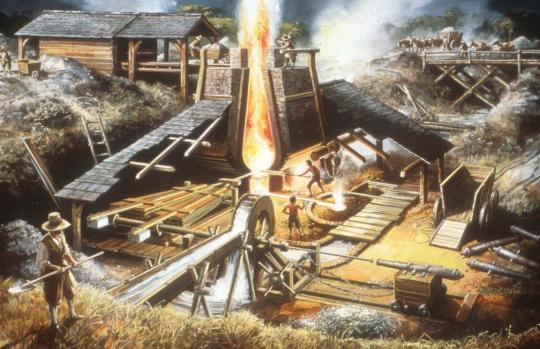
a blast furnace
So in all of this, what’s cold iron? Well, it’s iron that went though the heat and cooled off. (No heat = no iron, all you got is ore.) If it came out of a bloomery, or if it wasn’t cast, it’s by definition worked, hammered, beaten, wrought, and that happened while it was still hot.
Is there such a thing as “cold-wrought” iron? No. In fact, “working cold iron” was a simile for something foolish or pointless. A smith who beats cold iron instead of putting it in the fire shows folly, says a 1694 book on religion, so you too should choose your best tools, piety and good decorum, to educate your children and servants, instead of beating them. When Don Quixote (1605) declares he’ll go knight-erranting again, Sancho Panza tries to dissuade him, but it’s like “preaching in the desert and hammering on cold iron” (a direct translation of martillar en hierro frío).
Minor work can be done on cold iron. A 1710 dictionary of technical terms tells us that a rivetting-hammer is “chiefly used for rivetting or setting straight cold iron, or for crooking of small work; but ’tis seldom used at the forge”. Fully fashioning an object out of cold iron is not a real process – though a 1659 History of the World would claim that in Arabia it’s so hot that “smiths work nails and horseshoes out of cold iron, softened only by the vigorous heat of the sun, and the hard hammering of hands on the anvil”. [I declare myself unqualified to judge the veracity of this statement, let's just say I have doubts.] And there is of course such a thing as “cold wrought-iron”, as in wrought iron after it’s cooled off.
Either way, in the context of pre-20th century English texts which refer to apotropaic “cold iron”, it’s definitely not “cold-wrought”, or meteoritic, or a special alloy of any kind. It’s just iron.
Fiction
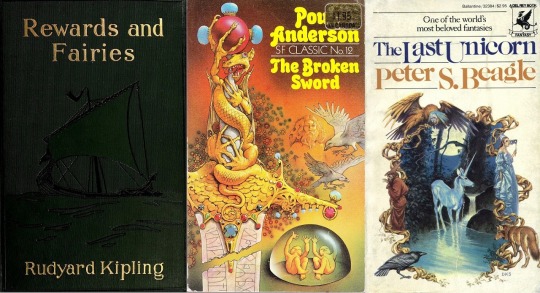
The old superstition kept coming up in fantasy fiction. In 1910 Rudyard Kipling wrote the very influential short story “Cold Iron” (in the collection Rewards and Fairies), where he explains invents the details of the fairies’ aversion to iron. They can’t bewitch a child wearing boots, because the boots have nails in the soles. They can’t pass under a doorway guarded by a horseshoe, but they can slip through the backdoor that people neglected to guard. Mortals live “on the near side of Cold Iron”, because there’s iron in every house, while fairies live “on the far side of Cold Iron”, and want nothing to do with it. And changelings brought up by fairies will go back to the world of mortals as soon they touch cold iron for the first time.
In Poul Anderson’s The Broken Sword (1954), we read:
“Let me tell you, boy, that you humans, weak and short-lived and unwitting, are nonetheless more strong than elves and trolls, aye, than giants and gods. And that you can touch cold iron is only one reason.”
In Peter S. Beagle’s The Last Unicorn (1968) the unicorn is imprisoned in an iron cage:
“She turned and turned in her prison, her body shrinking from the touch of the iron bars all around her. No creature of man’s night loves cold iron, and while the unicorn could endure its presence, the murderous smell of it seemed to turn her bones to sand and her blood to rain.”
Poul Anderson would come back to that idea in Operation Chaos (1971), where the worldbuilding’s premise is that magic and magical creatures have been reintroduced into the modern world, because a scientist “discovered he could degauss the effects of cold iron and release the goetic forces”. And that until then, they had been steadily declining, ever since the Iron Age came along.
There are a million examples, I’m just focusing on those that would have had a more direct influence on roleplaying games. However, I should note that all these say “cold iron” but mean “iron”. Yes, the fey call it cold, but they are a poetic bunch. You can’t expect Robin Goodfellow’s words to be pedestrian, now can you?
RPGs

And from there, fantasy roleplaying systems got the idea that Cold Iron is a special material that fey are vulnerable to. The term had been floating around since the early D&D days, but inconsistently, scattered in random sourcebooks, and not necessarily meaning anything else than iron. In 1st Edition’s Monster Manual (1977) it’s ghasts and quasits who are vulnerable to it, not any fey creature. Devils and/or fiends might dislike iron, powdered cold iron is a component in Magic Circle Against Evil, and “cold-wrought iron” makes a couple of appearances. For example, in AD&D it can strike Fool’s Gold and turn it back to its natural state, revealing the illusion.
Then Changeling: The Dreaming came along and made it a big deal, a fundamental rule, and an anathema to all fae:
Cold iron is the ultimate sign of Banality to changelings. ... Its presence makes changelings ill at ease, and cold iron weapons cause horrible, smoking wounds that rob changelings of Glamour and threaten their very existence.... The best way to think about cold iron is not as a thing, but as a process, a very low-tech process. It must be produced from iron ore over a charcoal fire. The resulting lump of black-gray material can then be forged (hammered) into useful shapes.
— Changeling: The Dreaming (2nd Edition, 1997)
So now that we know how iron works, does that description make sense? Well, if we assume that the iron ore is unceremoniously dumped on coals, it does not. You can’t smelt iron like that. If we assume that a bloomery is involved even though it’s not mentioned, then yes, this is broadly speaking how iron’s been made since the Iron Age, and until blast furnaces came into the picture. But the World of Darkness isn’t a pseudo-medieval setting, it’s modern urban fantasy. So the implication here is that “cold iron” is iron made the old way: you can’t buy it in the store, someone has to replicate ye olde process and do the whole thing by hand. Now, this is NOT how the term “cold iron” has been used in real life or fiction thus far, but hey, fantasy games are allowed to invent things.
Regardless, 3.5 borrowed the idea, and for the first time D&D made this a core rule. Now most fey creatures had damage reduction and took less damage from weapons and natural attacks, unless the weapon was made of Cold Iron:
“This iron, mined deep underground, known for its effectiveness against fey creatures, is forged at a lower temperature to preserve its delicate properties.”
— Player’s Handbook (3.5 Edition, 2003)
Pathfinder kept the rule, though 5e did not. And unlike Changeling, this definition left it somewhat ambiguous if we’re talking about a material with special composition (i.e. not iron) or made with a special process (i.e. iron but). The community was divided, threads were locked over this!
So until someone points me to new evidence, I’ll assume that the invention of cold iron as a special material, distinct from plain iron, should be attributed to TTRPGs.
#long post#cold iron#d&d#Changeling: The Dreaming#World of Darkness#Peter S. Beagle#The Last Unicorn#Rudyard Kipling#Poul Anderson#The Broken Sword#how to rogue#pathfinder#rogues in fiction#Operation Chaos#rogue superstitions#words of the trade#thieves' cant#ad&d#d&d history#1st edition#fey#3.5#fluff#trs
337 notes
·
View notes
Text

There's an eclipse happening right now.. so what better to do than draw Eclipse art :]
#purplearts#cj mind#cj heart#chonny jash#cccc#chonnys charming chaos compendium#cw shipping#<- just in case#this is based on a tweet I saw a while back with this exact prompt#it can be interpreted literally any way you want to!!#just adding the ship tag because it is. eclipse art
156 notes
·
View notes
Text

Leeooooooooooo
#tmnt#tmnt 2k12#rottmnt#tmnt leonardo#rottmnt leo#tortles#love this boy#dunno if he’s my fav from rise but he’s definitely my fav from 2012#I kinda wish he was still the leader in rise tbh#I feel like that would have been pretty darn funny#added chaos to the already chaotic team#anyway#mutants are cool
2K notes
·
View notes
Text

Saw a specific Twitter screenshot again (inside this post) that I've been told, people can in fact read in my voice - and I feel called out because I was in fact, saying it to myself to draw the specific tweet with Heart.
This is also a little bit of me giving my propaganda about associating Heart with fire. I have a lot of thoughts about it - and I randomly had a headcanon that when he's trying to hold in something like anger, he "flares up" in a literal way with fire and all. He's doing so okay guys.
Also bonus doodle - based off of a comment from Winter
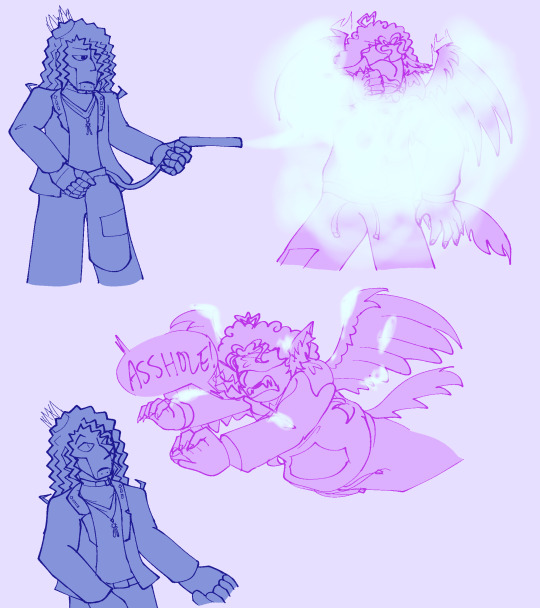
Mistakes were made.
#Chonny Jash#CCCC#CJ Heart#CJ Mind#Chonnys Charming Chaos Compendium#Tori's Doodles of Mellarky#Also playing around with not using white as a background and adding more color to my doodles#And by more color I mean 'Make a layer underneath with color and magic wand the unnecessary parts away'#This is very silly#Why did I type out the words in one part and just drew the rest? Oh you know.#Also I don't think I drew the use of fire extinguisher right do not listen to this post about it.
129 notes
·
View notes
Text
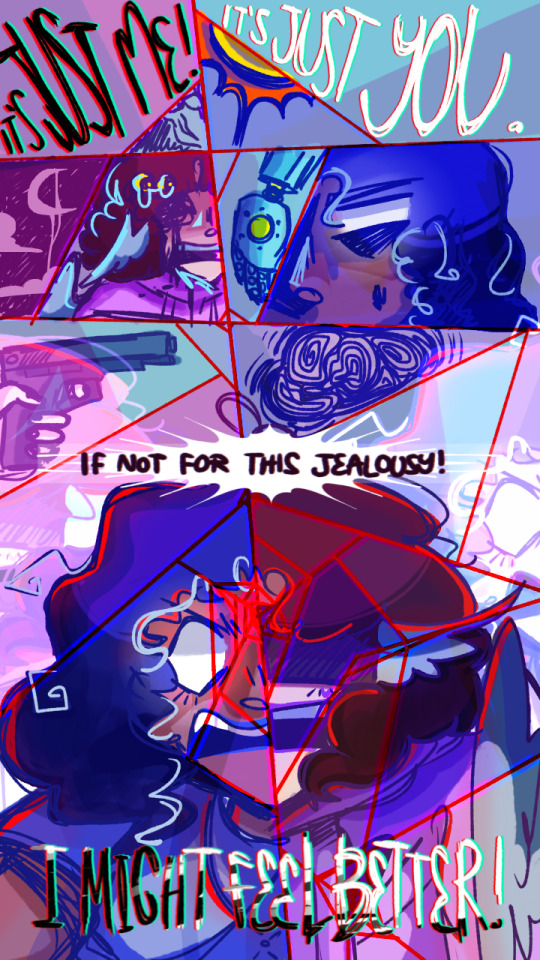
EAT YOUR FRIENDS.
#ah I love this song🥰🥰#and depictions of glass breaking in hms art 🥰🥰🥰🥰#I also gave mind grey hairs because of course it would have grey hairs and i was stupid for not adding it to my reference sheet#like i was so envious of white hair mind designs but i didn't want to draw him with white hair for some reason but like!!!#The solution!!! Gray hairs!!!#neon's nonsense#chonny jash#chonnys charming chaos compendium#cj mind#cccc#cccc fanart#cccc mind#cccc heart#cj heart#just realised i forgot Heart's lipstick in the small heart drawing under the “its just me” bit and i can't be bothered to fix it#that will irk me
140 notes
·
View notes
Text
For reference- this is Albert :)

#yes I will be adding albert into my header image if he wins this#i’m that determined#I absolutely love chaos#poll#albert the cockroach#perry the platypus#Tumblr ™#polls#chaotic poll#mascot#bugs tw#cw bugs#cockroach#hellsite hall of fame curator’s bullshit
484 notes
·
View notes